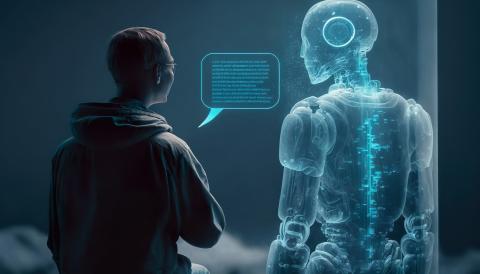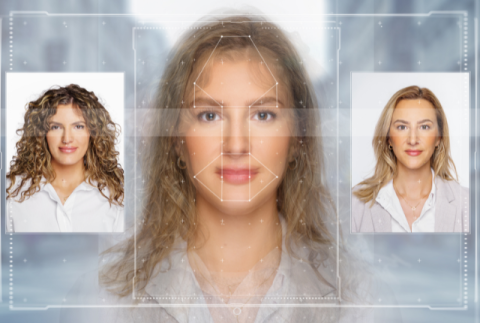The Deepfake Dilemma: Balancing Innovation, Security, and Reality
November 17, 2023As new artificial intelligence technologies fundamentally and rapidly revolutionize the world, deepfakes have emerged as a potent force, blurring the lines between reality and fabrication. These AI-generated multimedia creations seamlessly manipulate images, videos, and audio content to depict individuals engaging in actions or speaking words they never actually did. While deepfakes have garnered attention for their use in entertainment and creative expression, their far-reaching implications and potential for malicious use demand proactive measures to ensure safety and privacy.
Understanding Deepfakes
Deepfakes rely on deep learning techniques, a branch of AI, to analyze massive amounts of audio and video data, often of a specific individual. This data is then used to train a machine learning model that can mimic the individual's facial expressions, voice, and mannerisms. With this model in place, AI can be used to generate new media content featuring the target individual, seemingly saying or doing whatever the creator desires.
The creation of deepfakes is no longer restricted to those with sophisticated technological expertise. Open-source software and cloud-based platforms have made this technology accessible to a wider audience, including individuals with limited technical skills. Where it used to take thousands of data points to train a model, it now can take only a few pieces of content. This democratization of deepfakes raises significant concerns about AI’s potential for misuse.
The Potential for Good and Evil
Deepfakes hold the potential for both positive and negative applications. On the positive side, they can be used for entertainment purposes, creating humorous parodies, and educational simulations. They can also be employed by artists to push creative boundaries and explore new forms of expression.
However, deepfakes are also raising significant legal, social, and ethical concerns, especially as their creation and use remains widely unregulated. Deepfakes can be used to damage reputations and put someone’s safety at risk, such as content that creates fake evidence to accuse someone of a crime. They’re being used to mimic voices of family members or business executives to extort money and personal information. For example, a fake video of a CEO announcing a merger could be used to manipulate investors to buy or sell stock in the company.
AI-generated images depicting child sex abuse victims and pornographic materials, including fake nude images of New Jersey high schoolers that were shared in a group chat, are already spreading. With little regulation and automatic detection methods in place, authorities have expressed considerable worries that the problem will quickly overwhelm investigators.
A major concern is how deepfakes can be used to create fake news that appears to come from legitimate sources, including those aimed at discrediting politicians and public figures by showing them doing and saying things that never happened. By weaponizing misinformation, malicious actors can manipulate public perception, sow distrust, and potential spur violent social upheaval.
Combating the Misuse of Deepfakes
Addressing the misuse of deepfakes requires a multifaceted approach that encompasses technological advancements, legal frameworks, and public education.
Researchers are continuously developing techniques to detect and prevent deepfakes. These methods include analyzing subtle imperfections in AI-generated media, identifying inconsistencies in facial expressions or voice patterns, and employing machine learning algorithms to recognize deepfakes based on statistical anomalies. Tech giants like Google and Meta are using these technologies to identify and label AI-created content on their platforms.
Legal frameworks need to be — and are being — established to regulate the creation and use of deepfakes. These frameworks aim to define clear boundaries between permissible and prohibited uses, establish mechanisms for accountability, and provide avenues for punishment in cases of misuse.
Public awareness and education are crucial in combatting the spread of deepfakes. Individuals need to be equipped with the skills to critically evaluate digital content, recognize red flags, and verify the authenticity of information before sharing it.
Striking a Balance in the Deepfake Era
Deepfakes represent a technological breakthrough with incredible potential for innovation and societal benefit. Despite their creative possibilities, however, their potential for misuse cannot be ignored. As AI continues to evolve, technologists and lawmakers are seeking a balance between harnessing the power of AI while maintaining public trust in the digital environment. More accurate detection tools, increased public awareness, and concrete regulations are key to ensuring this balance.
Capitol Technology University offers numerous programs of study in artificial intelligence. The university also offers an award-winning cybersecurity program where students can learn how to combat harmful online dangers. To learn more about how Capitol Technology University can prepare you for a career fighting and protecting against misinformation, contact our Admissions team at admissions@captechu.edu.




